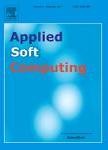版权所有:内蒙古大学图书馆 技术提供:维普资讯• 智图
内蒙古自治区呼和浩特市赛罕区大学西街235号 邮编: 010021

作者机构:Sikkim Manipal Inst Technol Dept Comp Sci & Engn Sikkim India RCC Inst Informat Technol Detp Informat Technol Canal South Rd Kolkata 700015 India Indian Inst Technol Delhi Dept Elect Engn Delhi India Univ Hyogo Sch Human Sci & Environm 1-1-12 Shinzaike Hon Cho Himeji Hyogo 6700092 Japan
出 版 物:《APPLIED SOFT COMPUTING》 (应用软计算)
年 卷 期:2016年第46卷
页 面:731-752页
核心收录:
学科分类:08[工学] 0812[工学-计算机科学与技术(可授工学、理学学位)]
主 题:Object extraction BDSONN Quantum computing QBDSONN Kolmogorov-Smirnov test
摘 要:This article proposes an efficient technique for binary object extraction in real time from noisy background using quantum bi-directional self-organizing neural network ( QBDSONN) architecture. QBDSONN exploits the power of quantum computation. It is composed of three second order neighborhood topology based inter-connected layers of neurons (represented by qubits) arranged as input, intermediate and output layers. In the suggested network architecture, the inter-connection weights and activation values are represented by rotation gates. A self-supervised learning algorithm, suggested in this proposed architecture, relies on the steepest descent algorithm. The quantum neurons enjoy full-connectivity in each layer of the network architecture. The image pixels in terms of qubits are self-organized in between the intermediate or hidden and output layers of the QBDSONN architecture using counter-propagation of the quantum states to obviate time consuming quantum back propagation algorithm. In the final phase, quantum measurement is carried out at the output layer to eliminate superposition of the quantum states of the outputs. In order to establish the result, the proposed QBDSONN architecture is applied on an artificial synthetic and on a real life spanner image with different degrees of uniform and Gaussian noises. Experimental results show that QBDSONN outperforms both its classical counterpart and the supervised auto-associative Hopfield network as far as extraction time is concerned and it retains the shapes of the extracted images with great precision. Experiments are also carried out using a linear method named local statistics (Wiener filter) and a nonlinear technique named median filter with adaptive discrete wavelet transformations (DWT) for binary object extraction to show the dominance of the proposed QBDSONN with respect to the quality of extracted images. Finally, a statistical significance of the proposed QBDSONN is reported by applying 2 sample one sided